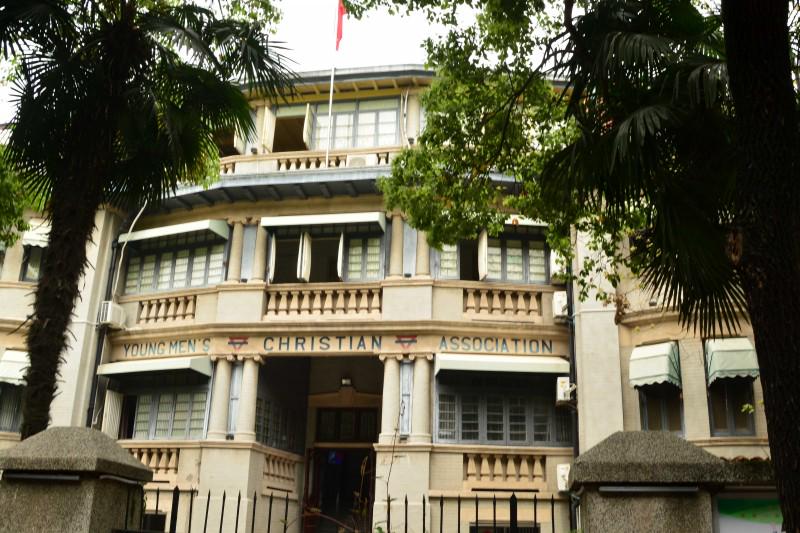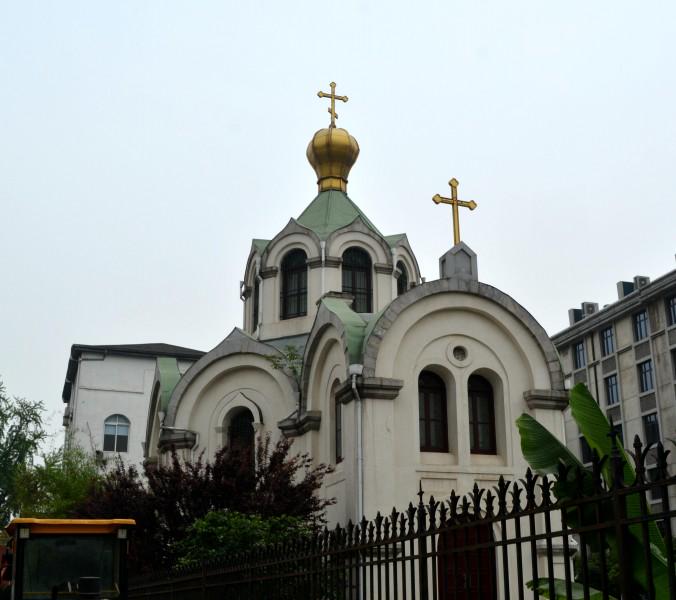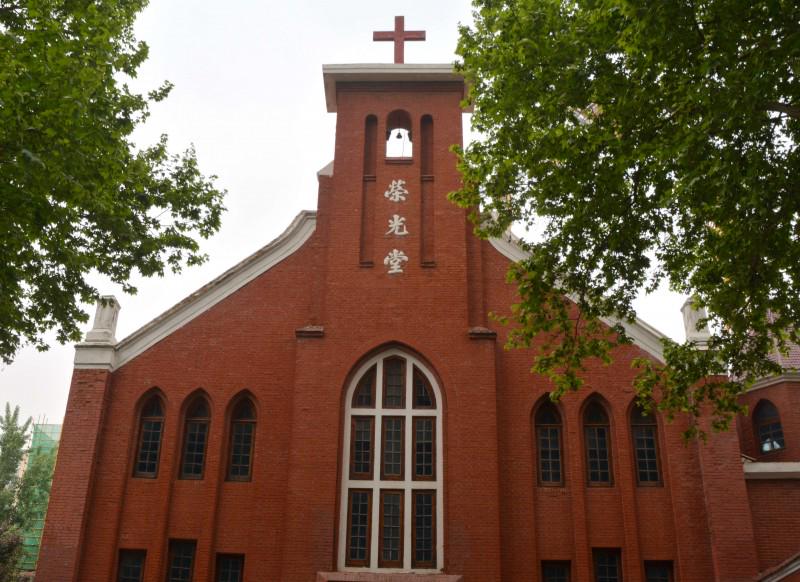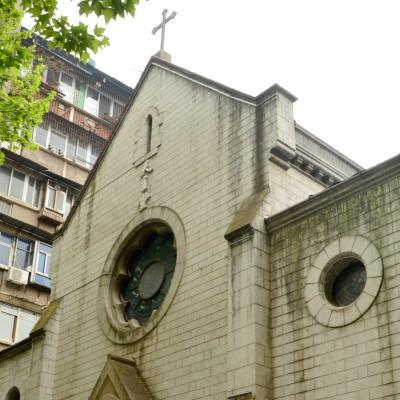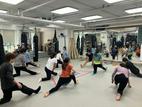"In the Yellow Crane Tower, the jade flute is being played and the plum blossoms fall in Jiangcheng in May." The poem was written by the famous Chinese poet Li Bai about the renowned Tower in Wuhan. The history of archaeological discoveries in Wuhan can be traced back to the early and middle Neolithic Age between 8000-6000 years ago.
Wuhan has outstanding historical buildings, mainly composed of financial, religious, diplomatic, residential, industrial, and commercial buildings in the period from 1861 to the 1950s when Hankou was opened as a treaty port. It integrates the classical romanticism of Western architecture and the implicit elegance of national architecture, which is comprised of Christianity, including excellent architectural relics of Catholicism, Protestantism, and the Orthodox Church, such as church buildings, hospital buildings, Christian organizations, etc.
In mid-April 2021, I visited some churches in Hubei Province, and Wuhan was the first stop. The ten Christian buildings and historical relics will be introduced one by one. Some of them are real cultural relics, which no longer belong to any church, nor are meetings or other religious activities being held there, while some are still being used by Christian churches or Christian organizations and medical charities. Part 1, which can be read here, depicts five Christian cultural relics and churches. Below is part 2.
6. The Swedish parish relic
The former site of the Swedish parish, also located in Tanhualin, Wuchang District, was built in 1890 at No. 92-108. It was not an independent building, but a "complex" comprising a consulate, a Catholic building, and a courtyard.
The Swedish parish was a missionary base built in Wuhan by the Swedish Missionary Society in 1890. The society built the Truth Lutheran Church, the dean's building, and the Truth Middle School. Apart from the church building, other buildings including the old Bishop's building, the consulate and clergy rooms, and the old buildings of truth middle school, were preserved. Among them, the chief pastor's building has the most Nordic style large slope roof, a two-story brick and wood structure. The two floors are circular arcades, the external wall is made of artificial mahogany powder, and the four slope roofs are covered with red flat tiles. I came here just in time to meet the buildings undergoing maintenance, the other buildings in the compound were also well preserved.
The Swedish Missionary Society belonged to Nordic Lutheranism. In 1890, the society's Pastor John Skld and four other missionaries arrived in Hualin County and began their missionary activities in Hubei. After several years of development, the construction of large garden houses in Tanhualin, the formation of a certain architectural scale, it seems that the body is outside the domain; a large number of garden houses have been built in the middle of Tanhualin, forming a certain architectural scale, which seems to be located outside the territory.
After the establishment of the central assembly of the Swedish Missionary Society in Wuchang, the organization sent missionary J. Sommar Strom to China in 1936 to preside over the church and appointed him as the consul of the Swedish Consulate in Wuhan. In March 1949, the society joined the Church of Christ in China. In 1952, the Swedish Consulate closed, Strom and all the foreign personnel of the former Swedish Association left Wuhan.
7. The former site of Wuhan YMCA
The Wuhan YMCA (Young Men's Christian Association) is also known as the former site of the US Navy YMCA. Located in Lihuangpi Road, Jiangan District, Wuhan city, it was built in 1913.
When I came here with my colleagues, I saw a four-story brick and wood structure building which was particularly spectacular on this road. The prominent position of the building in the center was above the former site of the American Navy YMCA in Han Kou.
According to the staff present, this was not a Christian church building. Rather, it was a venue for the activities of the US Navy, but the kind of activities held there is unknown.
The building covers an area of 1546.99 square meters and has a Baroque architectural style. The whole building is arranged symmetrically on both sides with the central part as the axis. The facade is divided into three longitudinal sections. The main entrance is located in the center and reinforced by two-legged ionic pillars.
The site is the fifth batch of Hubei provincial cultural relics protection units announced by the people's Government of Hubei Province on March 27, 2008. The courtyard is open for visitors, but the interior is restricted for visit, it can only be looked at and photographed from outside. It is not clear which organ or organization it belongs to now, but looking at the door plate, it should be the office building of Wuhan YMCA.
8. The Hankou Orthodox Church
The Hankou Orthodox Church is located at No. 48 Poyang street, Hankou. The church building is exquisite and "miniature". Built in 1876, it was originally known as Alexander Nevsky Church. It is the only orthodox church built by Russian expatriates in Hankou and is unique to date.
Covering an area of about 220 square meters, the church is a Russian church with a Byzantine architectural style and a cross layout.
The church adopts a centralized system and the scale is not very large. It is a milky white building. The wall of the ground floor is composed of multi-directional arches, the outer wall has pilasters and arches, and the lines and corners are exquisitely carved. For a long time, people have highly evaluated the design of this building. Some people praised it, saying "the exterior contour is full of changes, the wall is flowing and lively, which is rare".
The reason why this church was built in Wuhan is closely related to the Sino-Russian Wanli tea ceremony and tea leaves in those days. It is said that in 1898, Nicholas II, the Russian crown prince and later the last Czar Nicholas II, visited Hankou. In addition to hosting the 25th-anniversary celebration of the Xintai brick tea factory, he specially visited the Orthodox Church to listen to scriptures and worship. The gospel was not widely preached in Hankou by the Russian Orthodox, believers were not groomed, and it was specifically for the Russians, so there were few believers. In 1954, most of the Russians left, leaving only 38 believers. After 1958, the church gradually ceased to function.
Just like other Orthodox churches, the church gate is closed and visitors can only look through the fence. Now the hall has become the "Wuhan Sino Russian cultural exchange hall". It is said that it is also a special place for citizens to hold wedding activities.
9. The Hankou Glory Christian Church
Glory Christian Church was built in 1931. In the early days, the name of the church was to commemorate the 100th anniversary of the birth of Griffith John, a British missionary, and the 70th anniversary of his coming to China to preach. Therefore, it was named "Gefei Church" and later renamed the Glory Christian Church.
During the Anti-Japanese War, Wuhan was occupied by the Japanese, and the church became a place to store the ashes of the dead Japanese and was seriously damaged. After the war, it was restored and worship activities resumed. In 1951, the church was officially renamed the Glory Christian Church, adopting the famous Biblical phrase "Peace in heaven and glory in the highest!" Religious activities were suspended during the Cultural Revolution and normal religious activities resumed in 1980.
The church is of Gothic architectural style with a small size. The red brick wall is part of a three-story brick and wood structure. The ground floor is an inner-corridor styled office building. The second floor is a chapel hall with a large arched altar, which can accommodate more than 1000 people at the same time. The third floor is a small open viewing platform.
The bell tower on the facade of the Glory Christian Church is high, and the two slopes of red tiles are divided by the cross. The whole building looks simple and grand. The church faces the street, so the small square in the courtyard is not big. The cornerstone at the foot of the right wall is well preserved and can be seen.
As we can see from the Glory Church's "Sunday weekly", we can understand that before the pandemic, the church had activities every day from Sunday to Saturday. But at present, due to the need for epidemic prevention and control, meetings are only held on Sundays. The Glory Church is one of the "Excellent historical buildings in Wuhan".
10. The Shanghai Road Catholic Church
The church is located at No.16 Shanghai Road in Hankou, opposite another excellent historical building in Wuhan "Station No.8". It was built in 1875 and completed in 1876 for 120,000 francs.
The church is called St. Joseph's Church in Catholicism because it was dedicated to Joseph, the adoptive father of Jesus. The church and the Bishop's office are at the front yard of the parish, and the Wuhan nun's convent is in the back yard, and now there is a residential area in the Catholic church.
The Catholic Church at Shanghai Road is also affiliated with the Wuhan Catholic Church. In 1866, an Italian missionary, Eustachio Vito Modesto Zanoli, a member of an Italian Franciscan Order (O.F.M. - Ordo Fratrum Minorum), served as the bishop of the Catholic pastoral district of Hubei Province from 1862 to 1870, and the bishop of the Catholic pastoral district of Eastern Hubei Province from 1870 to 1883. He purchased 6,044 square meters of land from the British Concession Ministry of Industry and commissioned another Italian priest, Yu Zuobin, to build the church in Roman basilica style.
The plane layout of the church is Latin cross-shaped, with a two-story brick and wood structure. The overall length is 40 meters, the width is 26 meters and the middle main hall of the three arcades in the church is 14 meters wide. There are two round pagoda-shaped bell towers on the left and right sides at the back, and the cross at the top of the hall is 22 meters high. With a building area of 1024 square meters and 5 altars, it can accommodate more than 1000 people to celebrate mass at the same time.
In the early 20th century, the activity center of the Eastern Hubei Catholic Diocese was moved from Wuchang to Hankou. When the diocese was divided in 1923, it became the Hankou Cathedral. At present, it is the Educational Affairs Center of the Wuhan Catholic Church.
(To ensure the accuracy of historical facts, some materials in this paper are quoted from "Wuhan Excellent Historical Buildings Website.")
- Translated by Nonye Nancy


